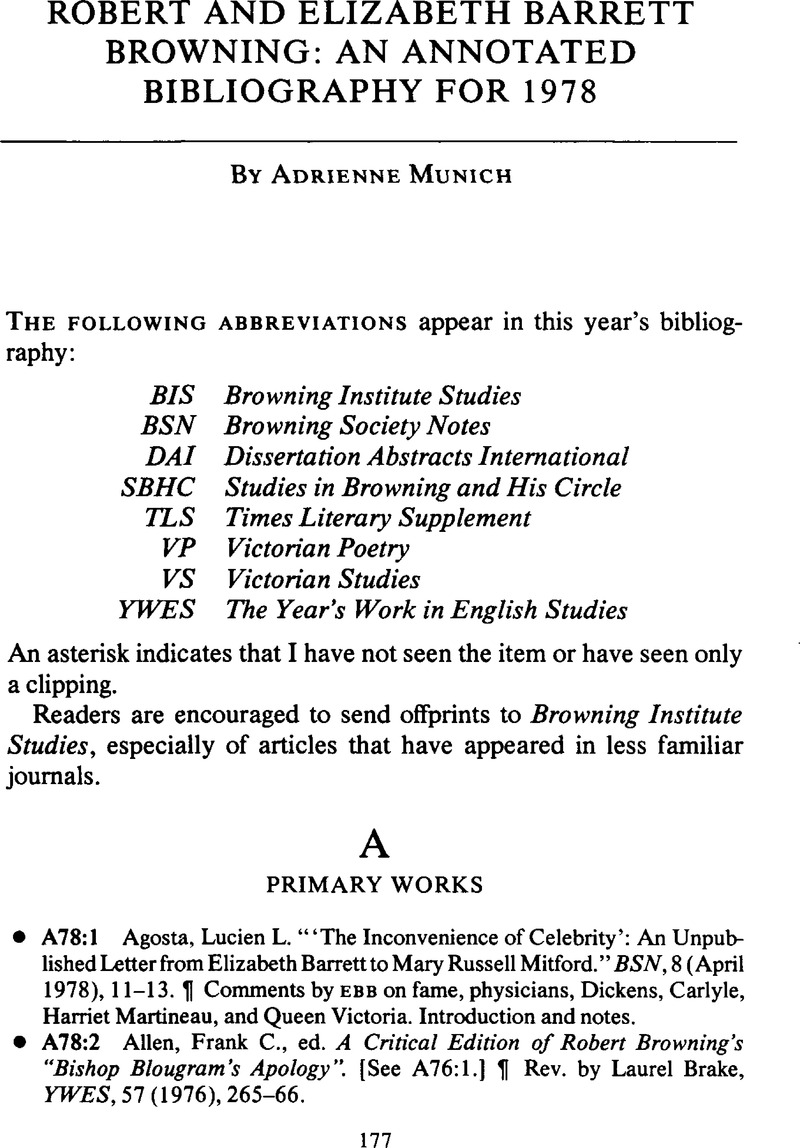•
C78:2 “The Ring, the Rescue, and the Risorgimento: Reunifying the Brownings' Italy.”
BIS, 6 (
1978),
1–
42. ¶ Challenges the assumption that the Brownings's political views were opposed and adduces, from poems and letters, that the Brownings's political views converged and that
ebb's intelligent political views are reflected in a deepening of
rb's idea of the hero in history.
Google Scholar